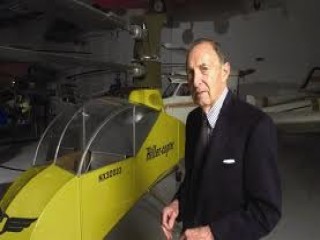
Stanley Hiller, Jr. biography
Date of birth : 1924-11-15
Date of death : 2006-04-20
Birthplace : Berkeley, California, U.S.
Nationality : American
Category : Science and Technology
Last modified : 2011-10-03
Credited as : engineer, Hiller Helicopter, Alzheimer's disease
0 votes so far
At 17 he founded Hiller Industries, which soon won a major federal contract to manufacture parts for combat aircraft, and Hiller's most important innovations and inventions revolved around the design of helicopters. His work in aviation is especially impressive considering that he had no college degree and little formal training in engineering. He attended U-Cal Berkeley for one year, long enough to meet the woman who became his wife, then dropped out after showing his helicopter sketches to an instructor in mechanical engineering, who told him that the contraption would never fly.
But fly it did. In 1944, Hiller developed his sketches to build a co-axial helicopter - the first helicopter with a double set of blades spinning in opposite directions on the same stem. Called the Hiller-Copter, this innovative design served to stabilize its flight, and helped make rotating-wing aircraft less rickety, more safe, and more commercially feasible.
With Henry J. Kaiser, he founded United Helicopters (later Hiller Aircraft Company) in 1947, and introduced the Hiller 360, the first "commuter helicopter", offering Hiller's simplified and patented rotormatic control system. The company's best-known helicopter was either the OH-23 Raven, introduced in 1948 and used as a medical evacuation craft during the Korean War, or the Hiller XROE-1 Rotorcycle, a collapsible one-man helicopter that weighed barely 100 pounds and could be disassembled to the size of a large suitcase, and first flew in 1957.
A 1946 profile in Pageant magazine described Hiller as "so utterly humorless that he never makes a joke and looks bewildered when anyone else does." He left the aviation industry in 1964, when he sold Hiller Aircraft to Fairchild Industries. He later founded The Hiller Group, a consultancy that specialized in turning around troubled businesses, and spent his last decades as what Business Week called a "Green Beret of corporate management." He died in 2006, of complications from Alzheimer's disease.
















